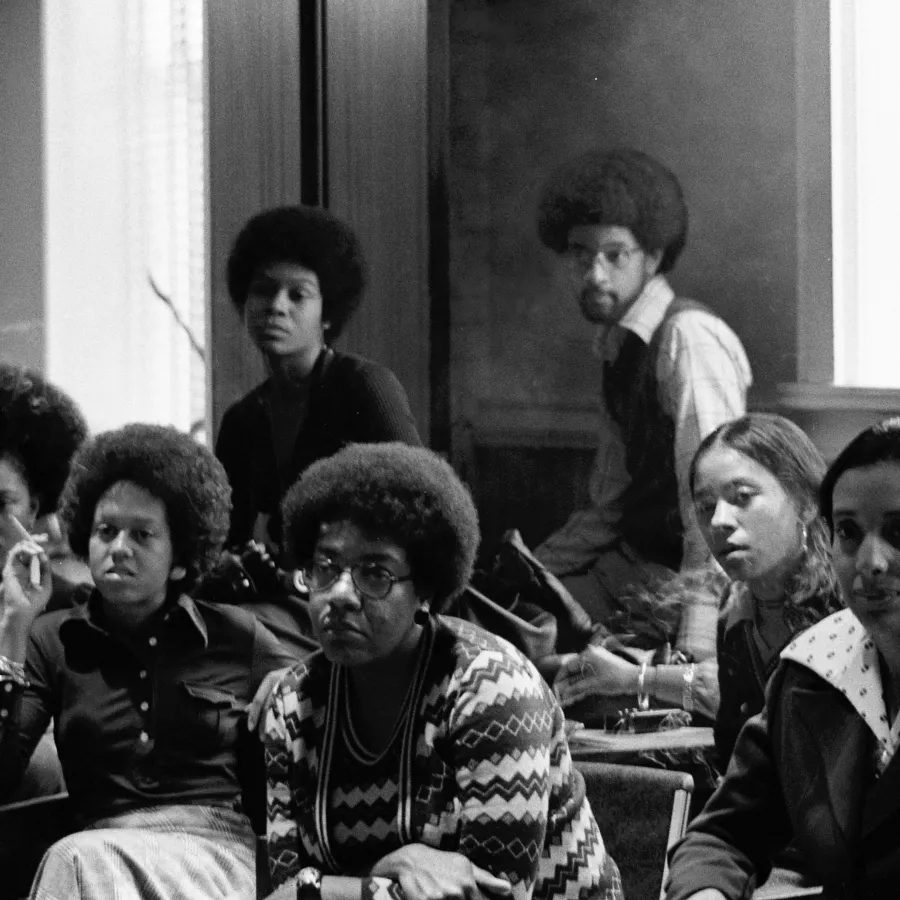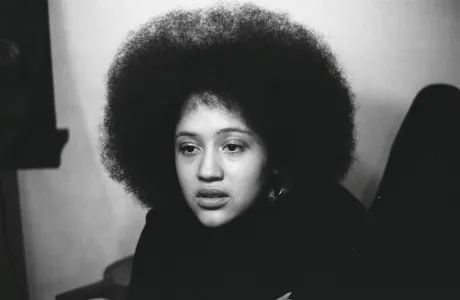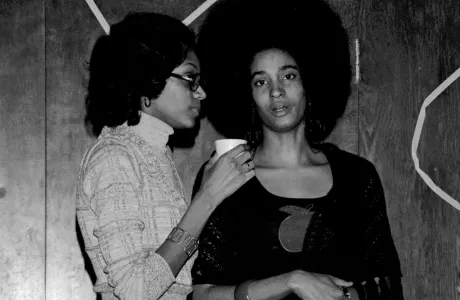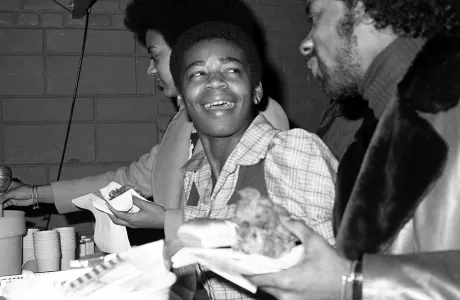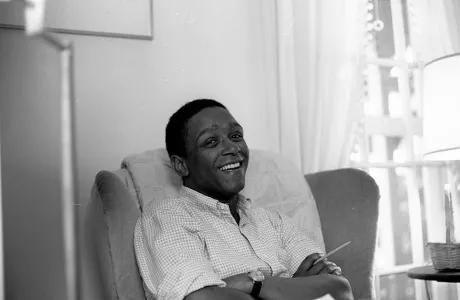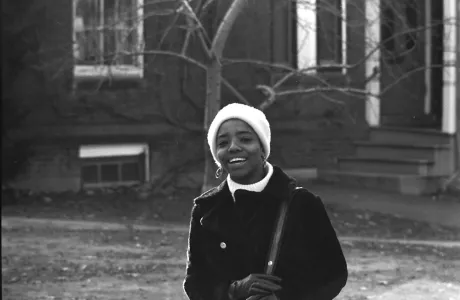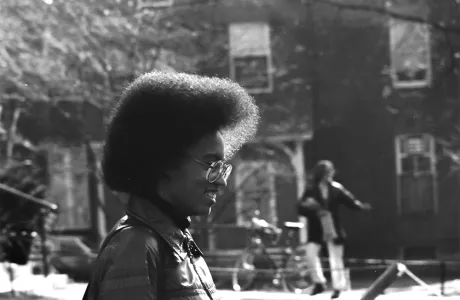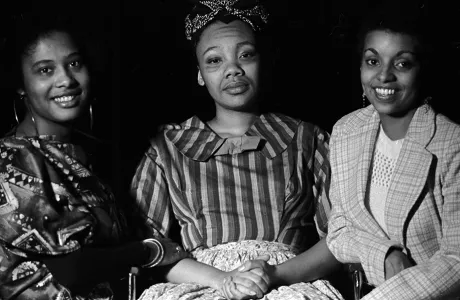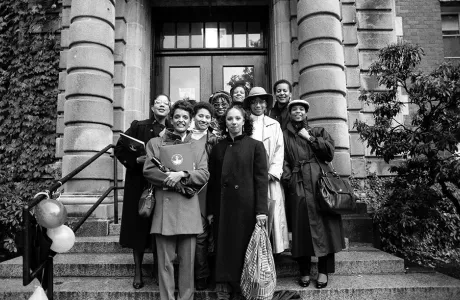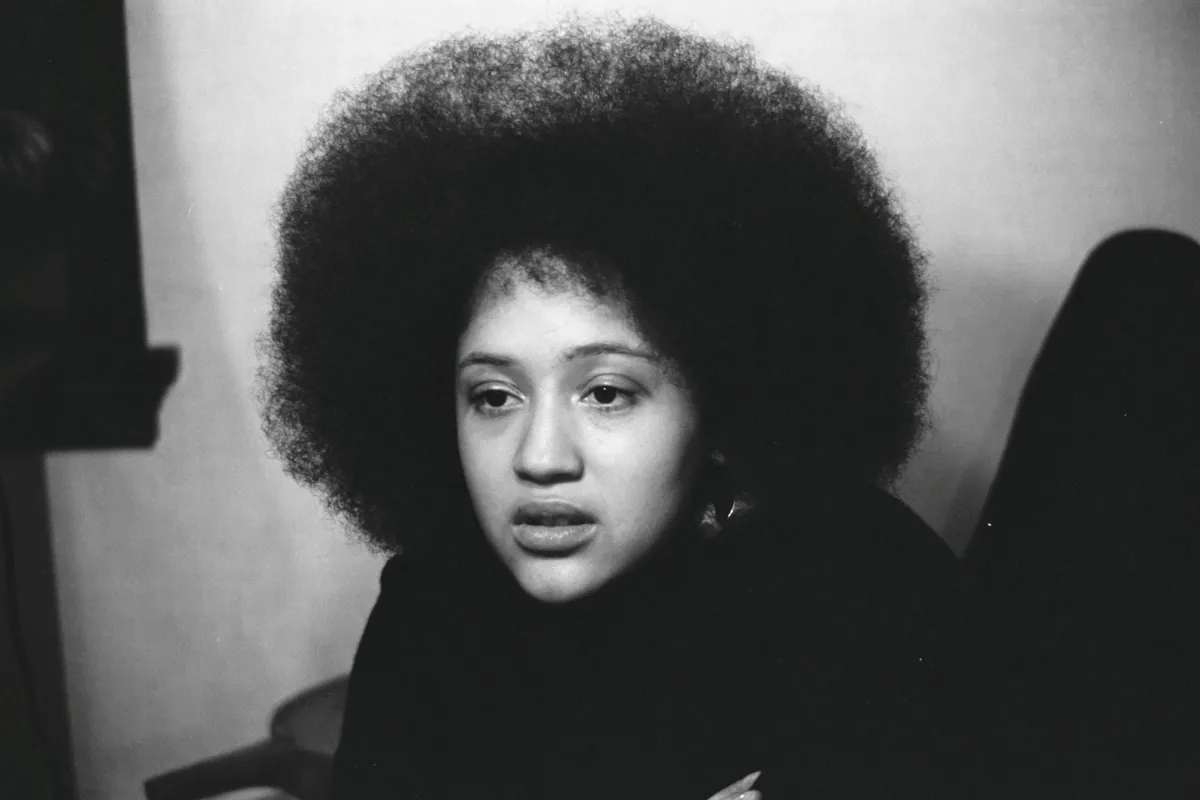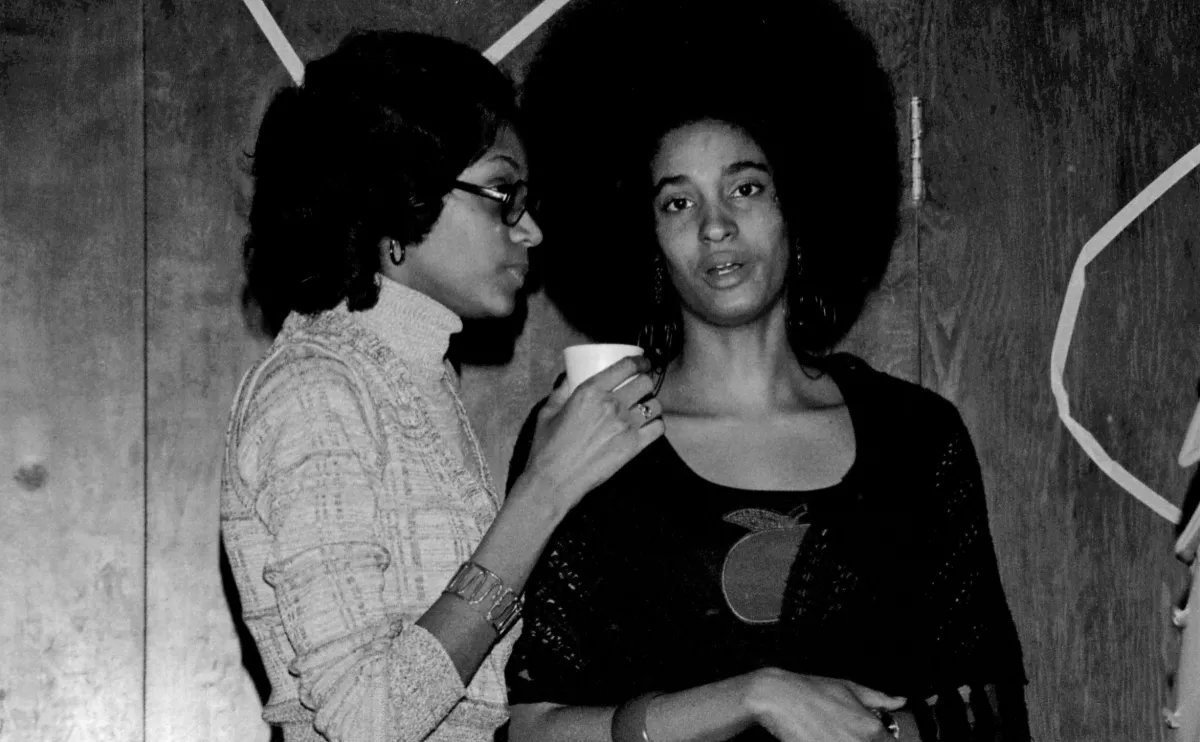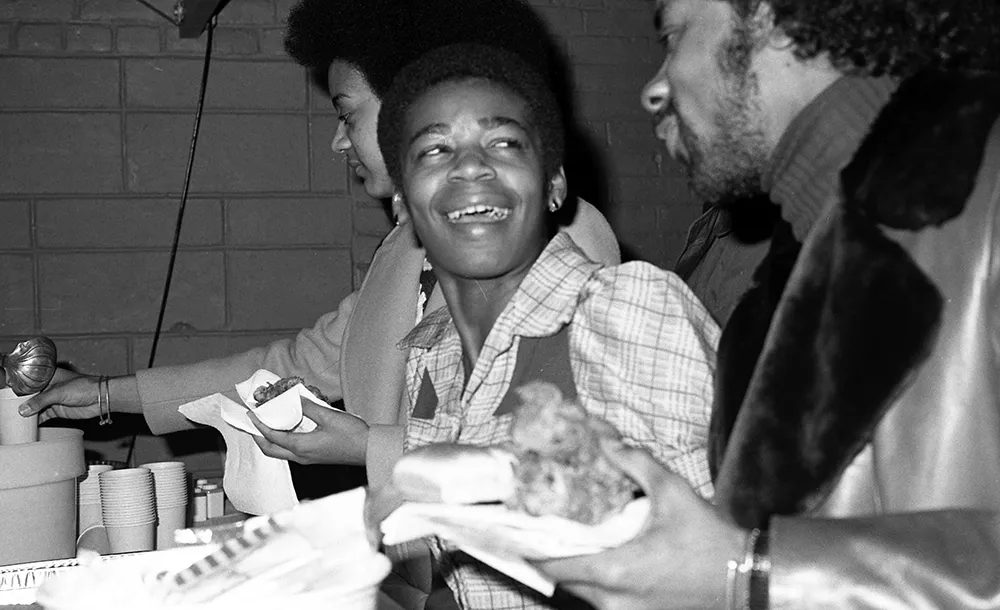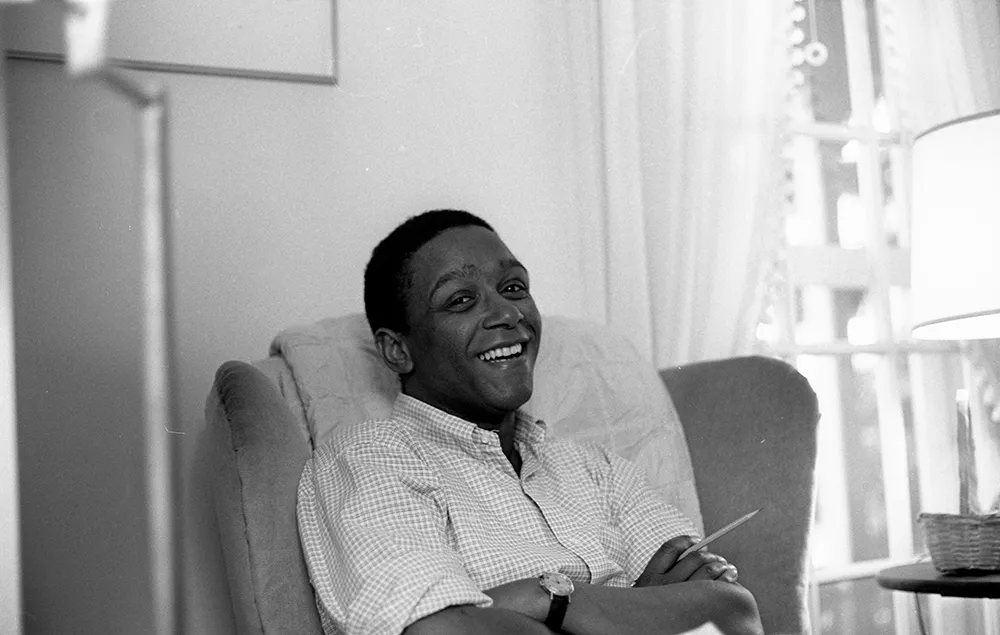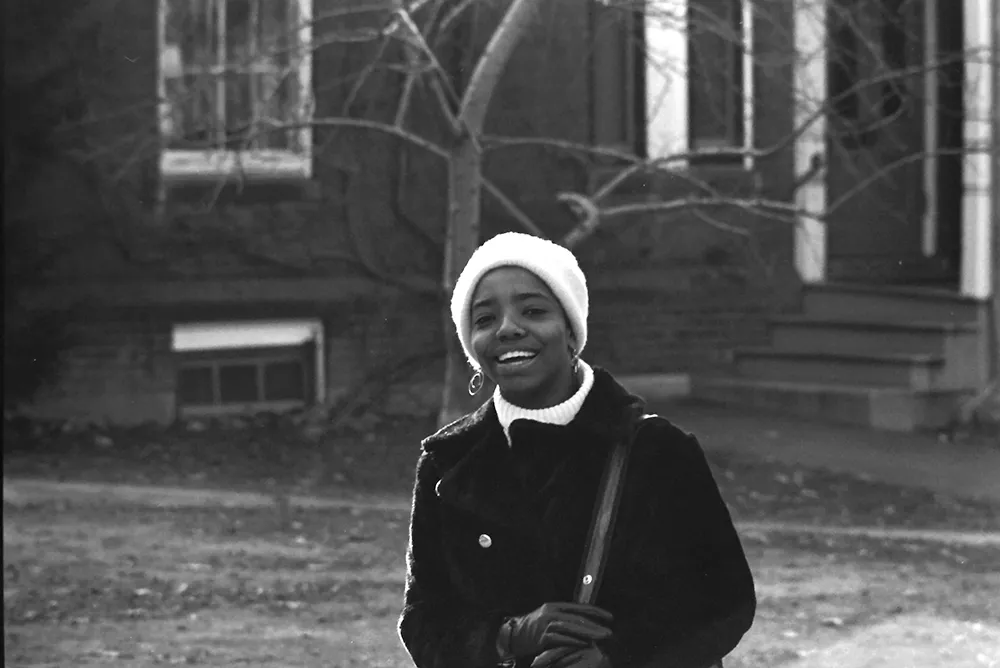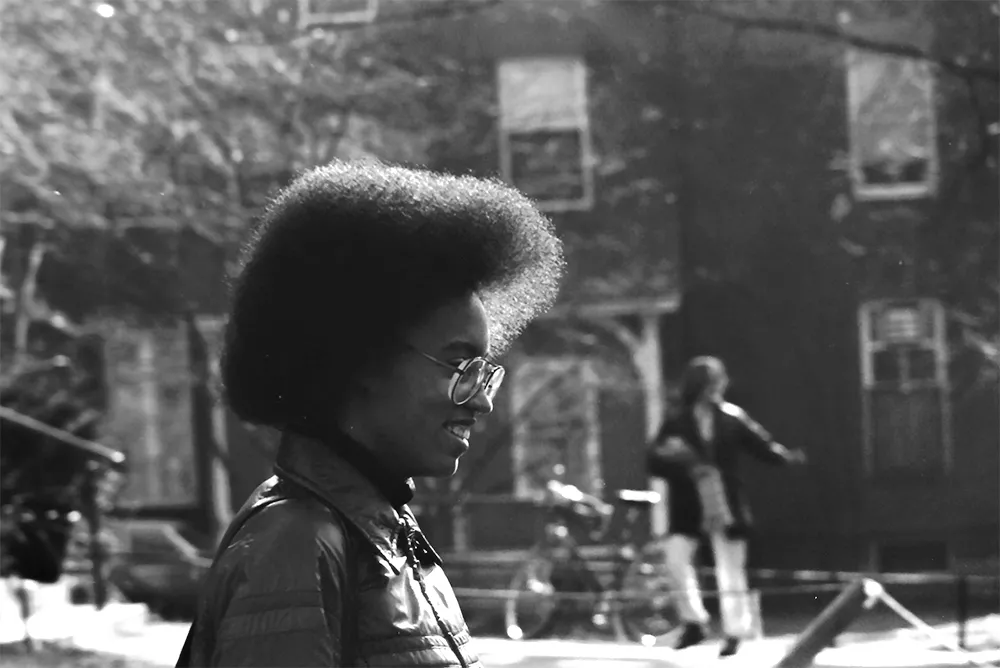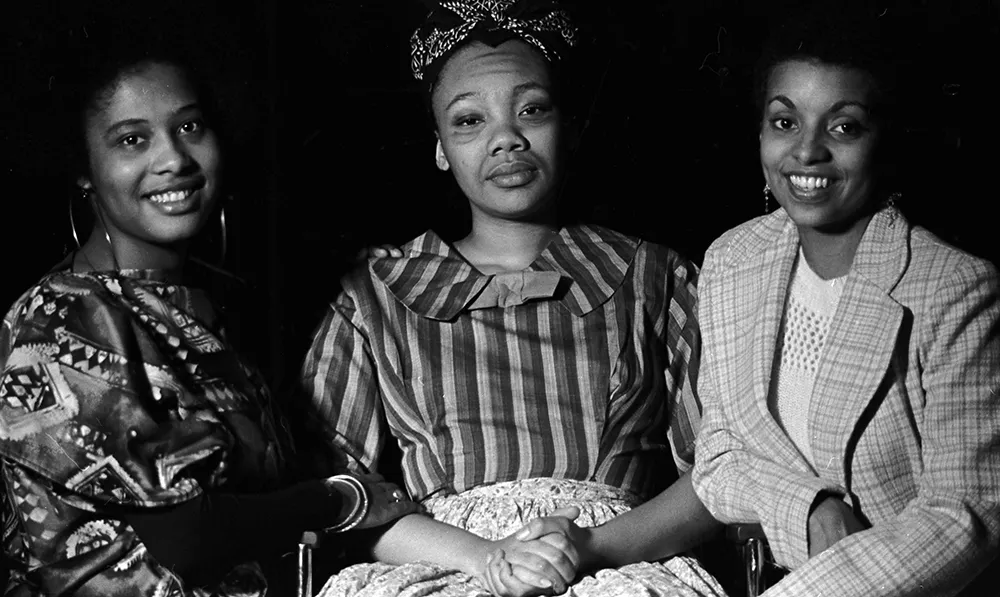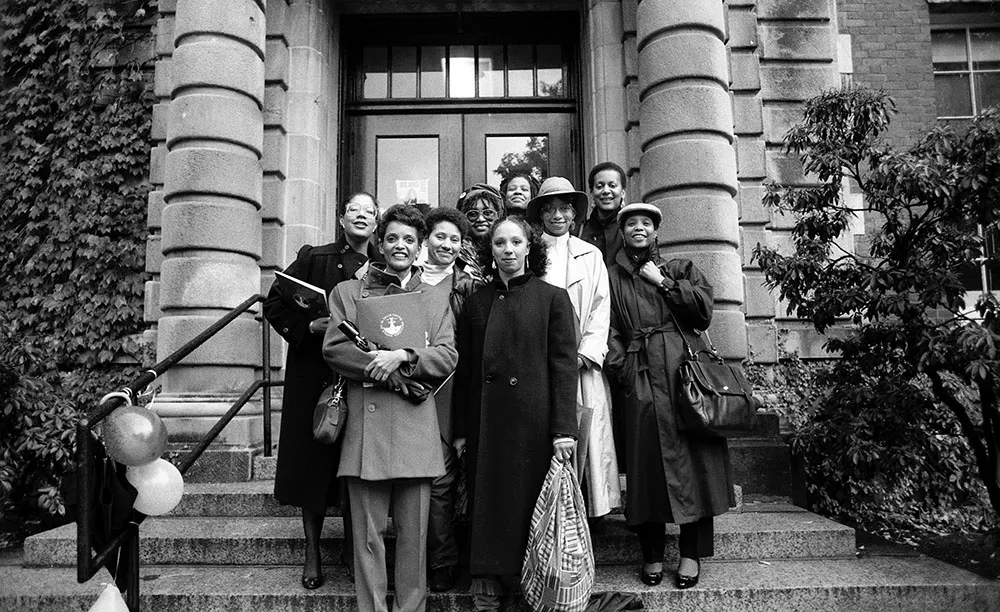Picturing the Black Experience
Smith Quarterly
Sandra Turner Bond ’74 documented the pride and perseverance of a class that made history at Smith
Attending a Black Students’ Alliance board meeting at the Mwangi Cultural Center are, from left, front row: Patricia Samuels Blanchard ’74, Patricia McCalla Harden ’73, M.S.W. ’82, Portia Gordon ’74, Sylvia (Cookie) Smith Lewis ’74, and an unidentified student; back row: Linda Smith Charles ’74 and William Boulware (Wesleyan ’71).
Published August 19, 2025
When Sandra Turner Bond ’74 returned to Smith to complete her degree after a year-and-a-half break, she was pleasantly surprised. When she first arrived with the class of 1973 in 1969, less than 1% of the student body was Black, and there were even fewer Black faculty. “I believed in women’s education,” Bond says, “but the environment was not that accepting.”
A government major, she left Smith at the end of her sophomore year, intending to finish her degree at Howard University. “At the time, I thought a Black student should devote their energies to historically Black colleges,” she says. But after a semester there, Bond dropped out to work as a civil rights activist in South Carolina, where she met her future husband, who had taken a break from his studies at Harvard.
Bond says Smith government professor Walter Morris-Hale, one of the college’s few Black professors in 1969, is one of the reasons she returned to Northampton. “During my first two years,” she says, “I would talk to him about the courses I was taking, how I was doing, and he would review papers with me. He was available and understanding—a feeling that I did not get from many of my other professors.”
When Bond did return to Smith in 1973 to finish her degree—newly married and living off campus—the shift at the college was palpable. In 1970, 69 Black students were part of the class of 1974, which translated into 10% of the class—the largest class of Black students at the time. Bond noticed the change immediately. “It was a different feeling because you had so many other faces like yours,” she says. “There were also other advances being made, and there were more Black faculty members. That made a difference to me.”
A budding photographer, Bond recognized the unique opportunity to document the Black experience at Smith. She took her Nikon everywhere, photographing Black student life on campus and at social activities like parties and mixers. She also did senior portraits for the yearbook. Bond would later write about that time, “I was able to see the Smith campus in a different way. Everywhere I looked, there were confident, proud, hardworking, and beautiful Black women—with full Afros, colorful headwraps, or modest hijabs—coming and going from classes, the library, or heading to after-school programs for young kids.”
After Smith, Bond went on to earn a graduate degree in journalism from Boston University’s College of Communication and was a freelance photographer for 10 years, with her work featured in various newspapers and other publications. After receiving a master of business administration from Yale University, she entered the telecommunications industry and is currently vice president for public sector business development at minority-owned Sky Communications.
In 2024, in celebration of the class of 1974’s 50th Reunion, Bond gathered the photos she took as a student and created a digital presentation titled “Celebrating Black Presence: a Smithie’s Photographic Memoir.” The accompanying text read: “The selection for this digital display primarily features photos of ‘sistahs’ from the class of 1974—at graduation, at parties, or sitting for a senior portrait. Despite some challenges, trials, and frustrations, I see faces of perseverance and cautious optimism, and regard them all as VICTORIOUS—and an important part of the Women of Change.”
Bond cherishes the education she received at Smith, still firmly believes in its mission, and is heartened by the evolution of its programs and policies. Her message to today’s Black students at Smith is clear: “I’m proud to see you at Smith College. You made a good choice for your education. Know you can be your authentic self at Smith. Strive to always be your best, and do not let any perceived intolerance or rejection diminish who you are. We as people, and as women, have value. Bring your value, and don’t be afraid to share it.”
